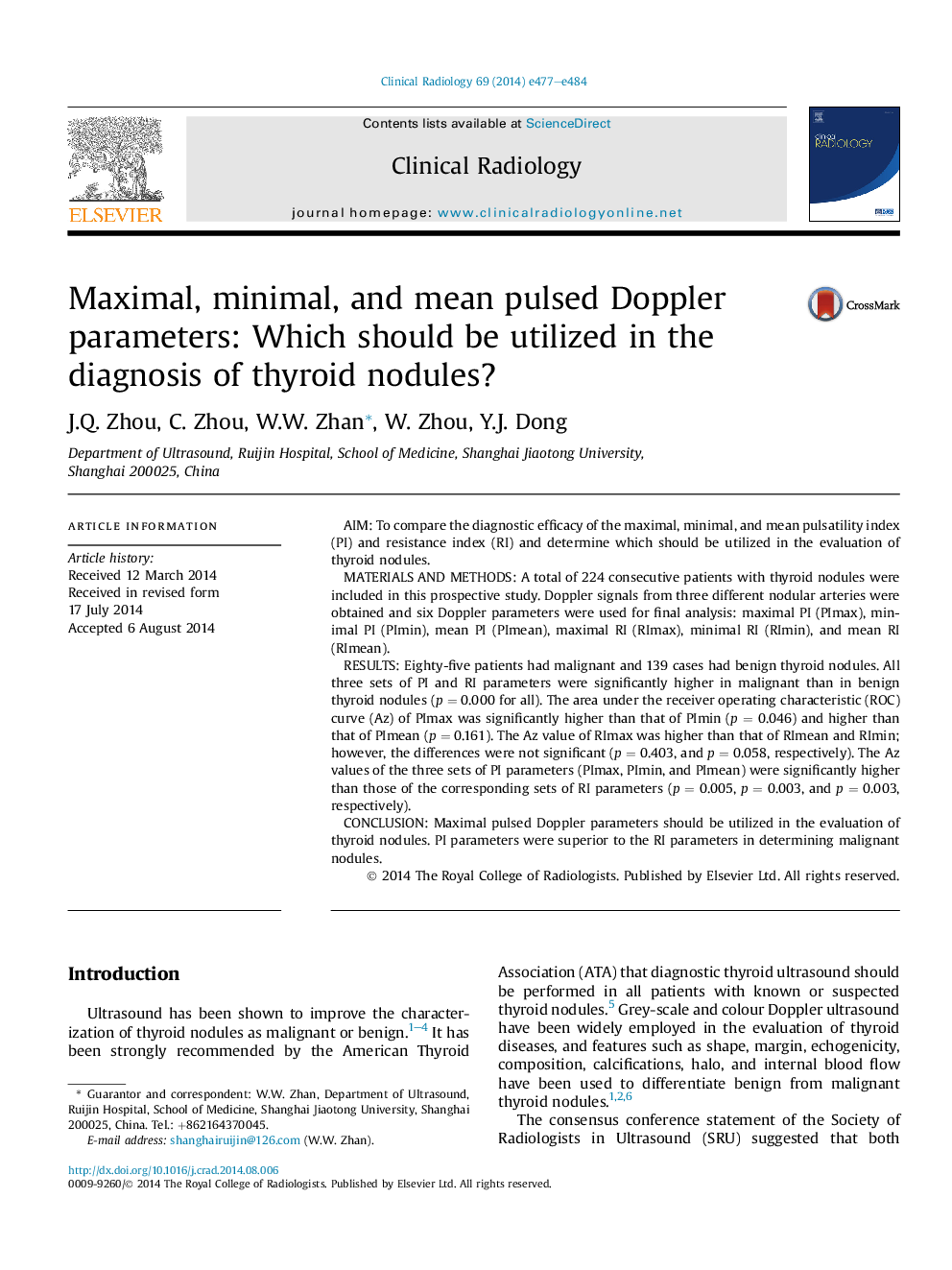| Article ID | Journal | Published Year | Pages | File Type |
|---|---|---|---|---|
| 3981658 | Clinical Radiology | 2014 | 8 Pages |
•Both PI and RI parameters were higher in malignant than benign thyroid nodules.•PI parameters were superior than RI parameters in determining malignant nodules.•PImax yielded the highest Az value in the diagnosis of thyroid nodules.
AimTo compare the diagnostic efficacy of the maximal, minimal, and mean pulsatility index (PI) and resistance index (RI) and determine which should be utilized in the evaluation of thyroid nodules.Materials and methodsA total of 224 consecutive patients with thyroid nodules were included in this prospective study. Doppler signals from three different nodular arteries were obtained and six Doppler parameters were used for final analysis: maximal PI (PImax), minimal PI (PImin), mean PI (PImean), maximal RI (RImax), minimal RI (RImin), and mean RI (RImean).ResultsEighty-five patients had malignant and 139 cases had benign thyroid nodules. All three sets of PI and RI parameters were significantly higher in malignant than in benign thyroid nodules (p = 0.000 for all). The area under the receiver operating characteristic (ROC) curve (Az) of PImax was significantly higher than that of PImin (p = 0.046) and higher than that of PImean (p = 0.161). The Az value of RImax was higher than that of RImean and RImin; however, the differences were not significant (p = 0.403, and p = 0.058, respectively). The Az values of the three sets of PI parameters (PImax, PImin, and PImean) were significantly higher than those of the corresponding sets of RI parameters (p = 0.005, p = 0.003, and p = 0.003, respectively).ConclusionMaximal pulsed Doppler parameters should be utilized in the evaluation of thyroid nodules. PI parameters were superior to the RI parameters in determining malignant nodules.
